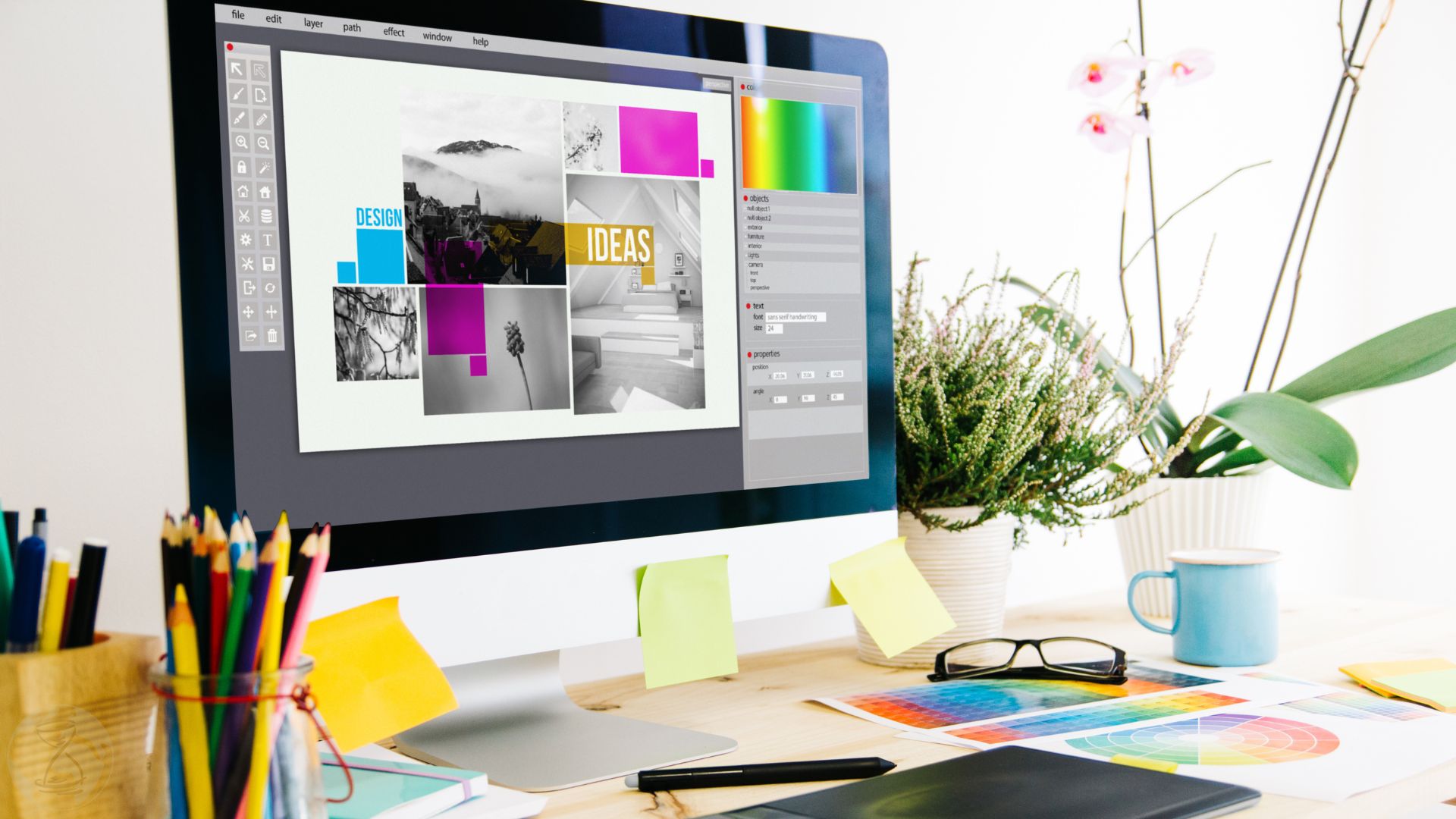
Digital Graphic Design bridges creativity and strategy to deliver visuals that communicate, convert, and elevate brands. Successful projects start with clear goals, rely on efficient workflows, and use design principles that support user needs and business outcomes. This guide expands on practical best practices across planning, workflow optimization, visual technique, branding, collaboration, and project refinement so your team can produce professional, on-brand work consistently.
Planning and Strategy for Digital Design Projects
A strong project begins with a detailed plan that aligns stakeholders, timelines, and deliverables. Good planning clarifies scope, reduces revision cycles, and helps teams estimate resources accurately while keeping client expectations realistic. Spend time on research, audience analysis, and a concise design brief so creative work starts with direction rather than guesswork.
- Define project goals and success metrics: Specify the purpose of each deliverable, target audience, key performance indicators, and how success will be measured.
- Develop a clear design brief: Include brand guidelines, tone of voice, color palettes, typography, required assets, and technical specifications.
- Conduct user and competitor research: Gather insights on audience behavior, competitors’ visuals, and trends to inform concepting.
- Map the project timeline and milestones: Break work into phases like research, concepts, reviews, revisions, and final delivery with realistic deadlines.
- Assign roles and responsibilities: Identify who owns concepting, production, approvals, and asset management to avoid duplicated effort.
Investing time in planning reduces costly rework and keeps creative energy focused on solutions that meet business needs. A well-written brief and realistic timeline turn client goals into measurable design outcomes and create a smoother collaboration between design teams and stakeholders.
Digital Design Workflow Optimization
Efficient workflows let creative teams move faster without sacrificing quality. Standardized processes, clear version control, and collaborative tools reduce friction, speed approvals, and help multi-person teams produce consistent, high-quality work across multiple projects.
- Use a single source of truth: Centralize assets and files in cloud storage so everyone accesses the latest versions.
- Implement consistent naming and versioning: Adopt a naming convention that includes project, date, and version number for easy tracking.
- Create reusable templates and components: Save time on repetitive layouts by building templates for social posts, banners, and presentations.
- Set review cycles and feedback windows: Schedule review rounds with clear deadlines to avoid endless, unstructured feedback.
- Automate repetitive tasks: Use actions, scripts, or plugins to speed up resizing, exporting, and asset optimization.
Optimized workflows create predictable output and free designers to focus on craft instead of file management. When teams standardize processes and automate repetitive work, projects finish faster and with higher consistency, making it easier to scale quality across client work.

Visual Design Principles and Techniques
Solid visual principles create clarity and drive attention to the right elements. Effective digital graphic design balances readability, hierarchy, and aesthetics while solving a communication problem. Applying these fundamentals helps content perform better across web, mobile, and social platforms.
- Typography hierarchy: Establish clear heading, subheading, and body styles that improve scanning and readability.
- Color and contrast: Use color to guide focus and ensure accessible contrast between text and background.
- Grids and alignment: Organize content with a grid system to create balanced layouts and consistent spacing.
- Imagery and composition: Use high-quality photography, vector art, and thoughtful cropping to tell a visual story.
- Motion and micro interactions: Add subtle motion to guide attention and give feedback without distracting from the message.
Design that follows visual principles looks intentional and performs better. By prioritizing hierarchy, contrast, and composition, designers produce work that communicates clearly and supports the user experience, whether the asset is a landing page hero, ad creative, or social graphic.
Branding and Digital Illustration Techniques
Branding transforms single assets into a cohesive identity that users recognize and trust. Custom illustration and icon systems elevate brand personality and help content stand out in crowded feeds. When brand assets remain consistent across touchpoints, the overall experience feels unified and professional.
- Maintain consistent brand elements: Use approved logos, color palettes, and typography rules across all deliverables.
- Create a scalable icon system: Design icons with consistent stroke weights and grid rules for visual harmony.
- Develop illustration guidelines: Define style, color usage, and contexts where custom illustrations should be used.
- Use brand templates: Build design systems or UI kits that include components for web and marketing materials.
- Treat motion as brand voice: Use animation speed and easing that reflect your brand personality and user expectations.
Thoughtful branding and bespoke illustration make messages memorable and trustworthy. A consistent, well-documented approach to brand assets ensures new creatives land on the brand quickly and that every touchpoint reinforces the same visual identity.
Collaboration, Feedback, and Client Approvals
Design is rarely a solo activity. Clear collaboration and structured feedback improve outcomes and reduce iteration cycles. Respectful, documented review processes keep projects on schedule and make approval paths transparent.
- Share context with each deliverable: Explain goals, target audience, and key messages when presenting concepts to reviewers.
- Use timestamped feedback tools: Annotated comments in shared design files make revisions clear and actionable.
- Limit reviewer count per round: Keep feedback focused by inviting a small, empowered group of decision makers.
- Capture approvals formally: Use sign-off documents or approval buttons to lock in final deliverables before production.
- Educate clients on design trade-offs: Explain the rationale behind design decisions to align expectations and reduce friction.
Structured collaboration and clear approval steps save time and preserve design intent. When teams present context and limit reviewers, feedback is more specific and useful, which shortens revision cycles and leads to stronger final work.

QA, Testing, and Project Optimization
Quality assurance and testing ensure designs work across platforms and devices. Preflight checks, accessibility considerations, and performance optimizations turn visually strong files into practical, production-ready assets.
- Device and resolution testing: Preview layouts on mobile, tablet, and desktop to ensure responsive behavior and legibility.
- File optimization: Export images and assets with appropriate formats and compression for web and social use to balance quality and speed.
- Accessibility checks: Verify color contrast, readable font sizes, alt text for images, and keyboard navigation where applicable.
- Preflight production checklist: Confirm fonts are outlined when needed, links are correct, and export settings match platform requirements.
- Post-launch review: Monitor analytics and campaign performance to identify improvements and iterate on future versions.
Rigorous QA and optimization ensure designs perform well in the real world. Testing across devices, optimizing assets, and reviewing performance metrics help teams refine work for both function and form, delivering a better outcome for users and clients.
Delivering Exceptional Digital Graphic Design
Digital Graphic Design projects reach their full potential when creativity is paired with process, structure, and testing. Starting with a clear strategy, following optimized workflows, applying strong visual principles, and enforcing quality checks leads to assets that are both beautiful and effective. Continuous learning and process improvement keep teams nimble and ensure every project contributes measurable value to the client’s goals.
Partner with Hourglass Marketing Solutions
Hourglass Marketing Solutions specializes in Digital Graphic Design that combines strategic thinking with visual craft. We help brands plan projects, build efficient workflows, and produce on-brand assets that perform across channels. Partner with us to turn your design brief into polished visuals that engage audiences and drive results. Contact us today to discuss your next project.


